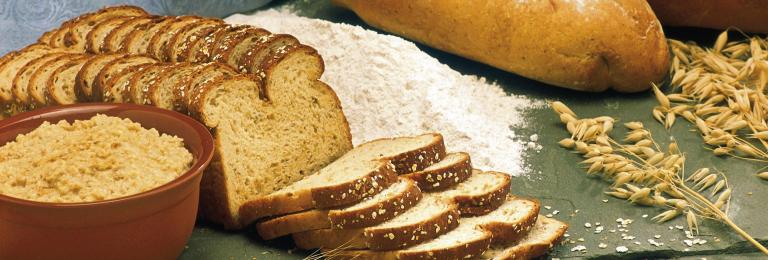Go for Grains
Whole-grain breads and cereals are packed with fibre, vitamins, minerals, and flavour. They keep you feeling full longer, and they have many benefits for disease prevention and healthy digestion. Examples of whole grains are whole wheat, cracked wheat, barley, oats, rye, brown rice, whole cornmeal and millet.
You can help young children enjoy whole grains by following these tips:
- Serve whole grain breads, breakfast cereals, brown rice, bulgur, barley and oats.
- When purchasing whole-grain cereals and breads, read the label to be sure that a whole grain is the first or second ingredient listed and that the product has at least 3 grams of fibre per serving.
- Know that not all whole-grain (ready-to-eat) breakfast cereals are equally nutritious. Many cereals labelled whole grain are also very high in sugar. Choose cereals that are low in sugar (5 grams or less) per serving.
- Set a good example by serving whole grains with meals and snacks.
Examples of ready-to-eat cereals with high fibre or low sugar:
- Cheerios – 3 g fibre, 1 g sugar
- Total – 3 g fibre, 5 g sugar
- Wheaties – 3 g fibre, 4 g sugar
Here are some final tips:
- Flavour and fibre: Get it all with whole grains, like brown rice, barley, oats, cornmeal, quinoa and buckwheat.
- Processed grains, like white rice and white bread, do not have as many good nutrients, especially fibre.
- Breakfast is a great time to try whole grains (e.g. cereals, waffles or whole grain bagels)
Source: Healthy Beginnings Preschoolers
